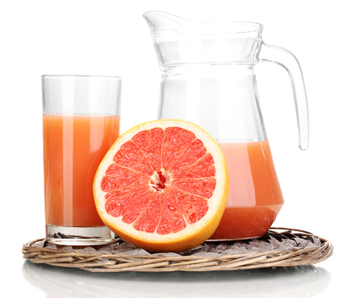

Numerous warnings to physicians and health care providers about potentially lethal drug interactions with cisapride did not improve appropriate prescribing of the drug. 11 There is a longer list of other drugs that must be prescribed with great caution to patients receiving cisapride. Therefore, concomitant use of cisapride with the antibiotics clarithromycin, erythromycin, and troleandomycin the antidepressant nefazodone hydrochloride the antifungals fluconazole, ketoconazole, and itraconazole and the protease inhibitors indinavir sulfate and ritonavir is contraindicated. 9, 10 The combination of cisapride, the oral gastrointestinal tract prokinetic agent used for the treatment of gastroesophageal reflux disease, with several drugs that elevate its plasma concentrations has resulted in serious and sometimes fatal ventricular arrhythmias, including torsade de pointes. These agents serve as substrates for cytochrome P450 3A, whose inhibition by ketoconazole or several macrolide antibiotics may result in prolongation of the electrocardiographic QT interval and lethal cardiotoxicity. 7, 8 Terfenadine (Seldane Marion Merrell Dow Inc, Kansas City, Mo) and astemizole (Hismanal Janssen Pharmaceutica, Titusville, NJ), widely prescribed antihistamines, were also withdrawn.

The novel calcium channel blocker mibefradil dihydrochloride (Posicor Hoffmann-LaRoche Inc, Nutley, NJ) was withdrawn from the market because of potentially dangerous interactions when it was coprescribed with any of more than 25 drugs, some of them resulting in rhabdomyolysis, renal failure, and death. Interactions resulting in removal of drugs from the market Being prescribed the wrong drug or drugs that interact is among the primary concerns of patients as they enter a physician's office. The adverse effects of drugs and drug interactions are of great importance to patients. The importance of adverse drug reactions as a cause of morbidity and mortality in the United States has been emphasized by several recent studies 4, 5 that have made clear that more than 100 000 deaths result from adverse drug reactions each year in US hospitals, representing the fourth to sixth leading cause of death. 2 Findings from one review 3 indicate that adverse drug reactions account for 10% to 17% of the medical reasons for acute hospital admission of elderly patients. Not only does this population take the most medications, but it also undergoes age-related changes in body and organ mass and in cardiac, hepatic, and renal function. The intersection of the high prevalence of hypertension, combination antihypertensive therapy, and drug-treated comorbid conditions results in the possibility of many drug interactions. Moreover, many patients with hypertension require medication therapy for other diseases or conditions. 1 Although the benefits of antihypertensive therapy are well established, it is clear that treatment with more than 1 drug may be necessary to achieve satisfactory blood pressure control. This article reviews the cytochrome P450 enzyme system, identifies drugs and foods that have been implicated in metabolic interactions with antihypertensive agents, and suggests measures for reducing the risk of adverse events when drugs are coadministered.Īn estimated 50 million Americans have hypertension. A potential for interactions with these enzymes exists with calcium channel blockers, β-adrenergic blocking agents, angiotensin-converting enzyme inhibitors, and angiotensin receptor blockers but not with diuretic antihypertensives, which are renally eliminated and more vulnerable to drug interactions that occur in the kidney. The most important class of drug interactions involves the cytochrome P450 microsomal enzyme system, which handles a variety of xenobiotic substances. The risk for hypertension and for adverse drug reactions is highest in the elderly, who have the greatest need for pharmacologic therapy. Many of the estimated 50 million Americans with high blood pressure receive medications for hypertension and for other conditions, placing them at risk for adverse drug interactions. Shared Decision Making and Communication.Scientific Discovery and the Future of Medicine.Health Care Economics, Insurance, Payment.Clinical Implications of Basic Neuroscience.Challenges in Clinical Electrocardiography.


 0 kommentar(er)
0 kommentar(er)
